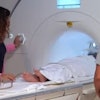For the RSNA 2011 conference, breast imaging abstract submissions increased by 40% as compared with last year's meeting, a testament to the continued drive to find better methods for early breast cancer detection, according to Dr. Hiroyuki Abe, PhD, of the University of Chicago, chair of the RSNA education exhibit breast subcommittee.
Conference attendees will encounter sessions and posters that examine current issues in breast imaging, such as imaging of reconstructed breasts and management of high-risk lesions. Breast ultrasound will be a highlight at this year's RSNA meeting: Researchers will share findings from studies that evaluate the efficacy of automated breast ultrasound and compare the accuracy of ultrasound and MRI in lymph node staging (check out session SSE02 on Monday, November 28, from 3:00 p.m. to 4:00 p.m. in Room E450A, as well as session SSJ01 on Tuesday, November 29, from 3:00 p.m. to 4:00 p.m. in the Arie Crown Theater).
"Automated breast ultrasound is one of the hot topics at this year's conference, due in part to the breast density notification legislation that more and more states have been demanding," Abe told AuntMinnie.com.

In the MRI realm, RSNA 2011 attendees will find several presentations devoted to research on diffusion-weighted MR breast imaging, Abe said. The technology doesn't require contrast, but rather measures the movement of water within different types of breast tissue and may improve MRI's specificity in breast imaging (for starters, check out poster session LL-BRS-TU in the Lakeside Learning Center).
"Diffusion-weighted MRI isn't a new technology, but researchers are exploring its use as a means to evaluate the effect of chemotherapy, and that's generating a lot of interest now," Abe said.
Also highlighted will be advanced imaging technologies such as molecular breast imaging -- which offer not only anatomic information but also functional data that can lead to more targeted breast cancer therapy (be sure to check out multisession course MSVM21 on Monday, November 28, from 8:30 a.m. to 12:00 p.m. in the Arie Crown Theater).
Finally, attendees will be able to view a number of posters that assess the diagnostic capability of breast imaging modalities, such as breast-specific gamma imaging and ultrasound elastography (take a look at poster sessions LL-BRS-SU and LL-BRS-MO in the Lakeside Learning Center). And in the computer-aided detection (CAD) arena, a refresher course called "New Trends in Breast CAD" will be offered on Tuesday, November 29 (4:30 p.m.-6:00 p.m., RC421, Room E352).
Read on for highlights of some of the more notable women's imaging papers scheduled for presentation at the RSNA 2011 meeting. To view the RSNA's listing of abstracts for this year's scientific and educational program, click here.



















